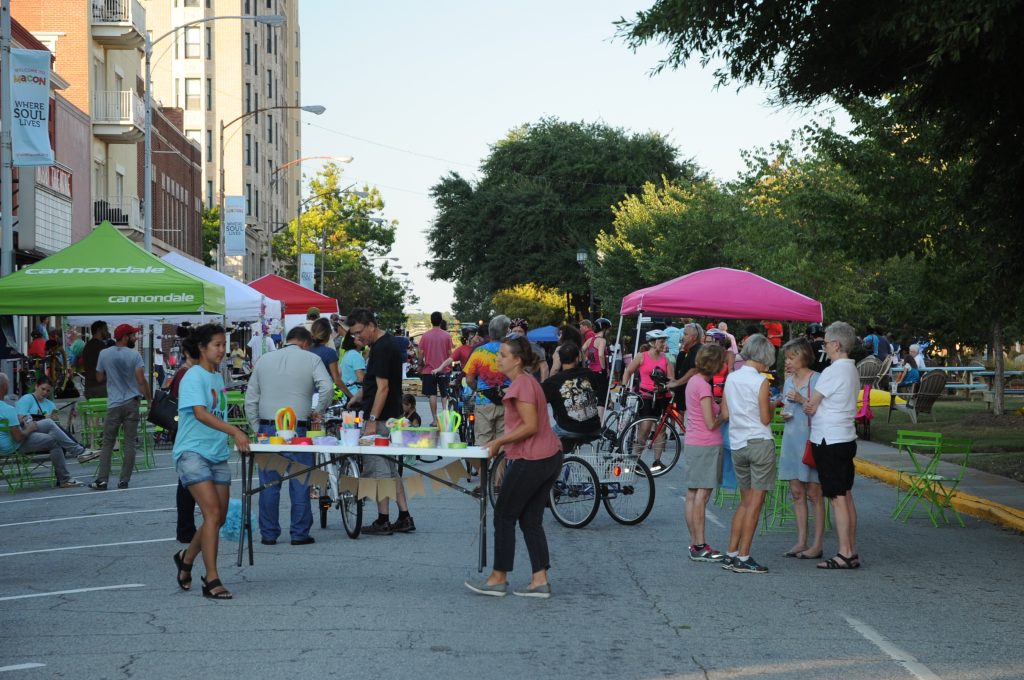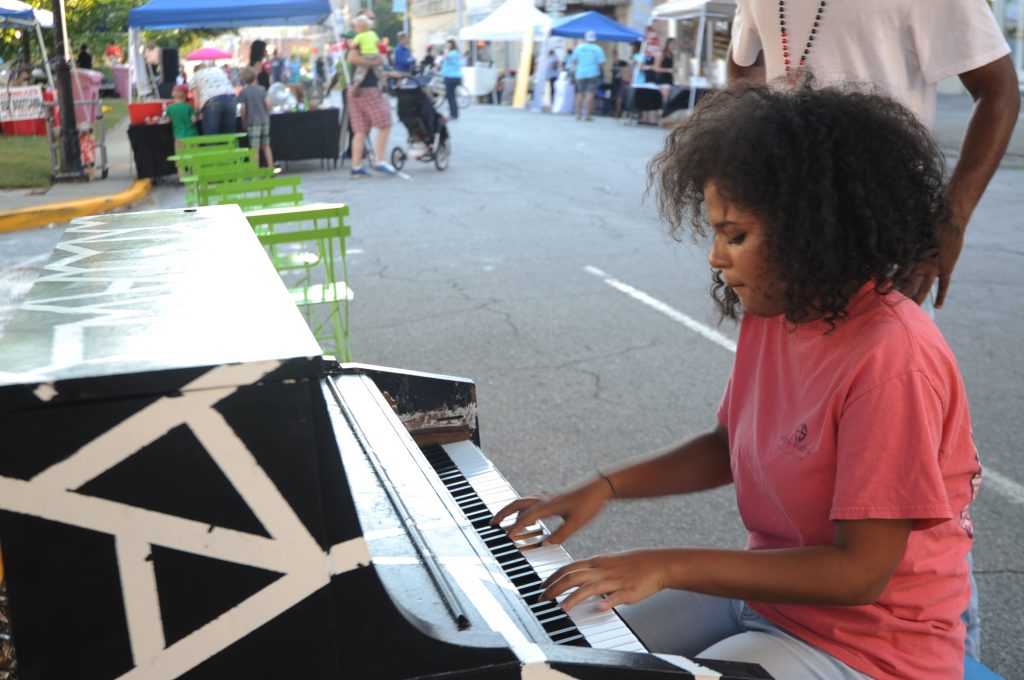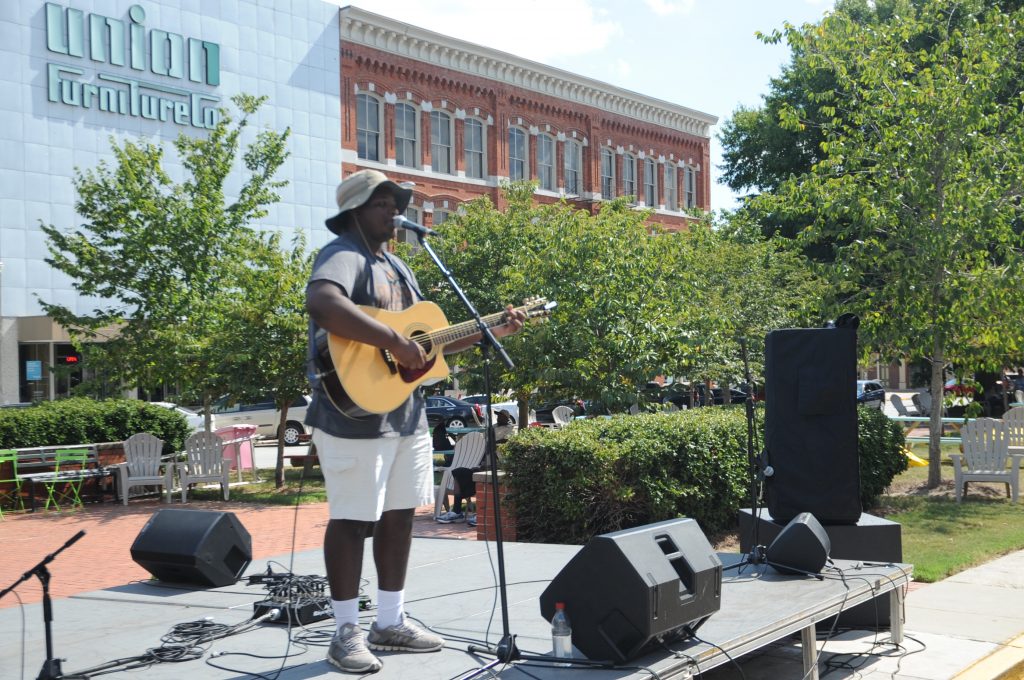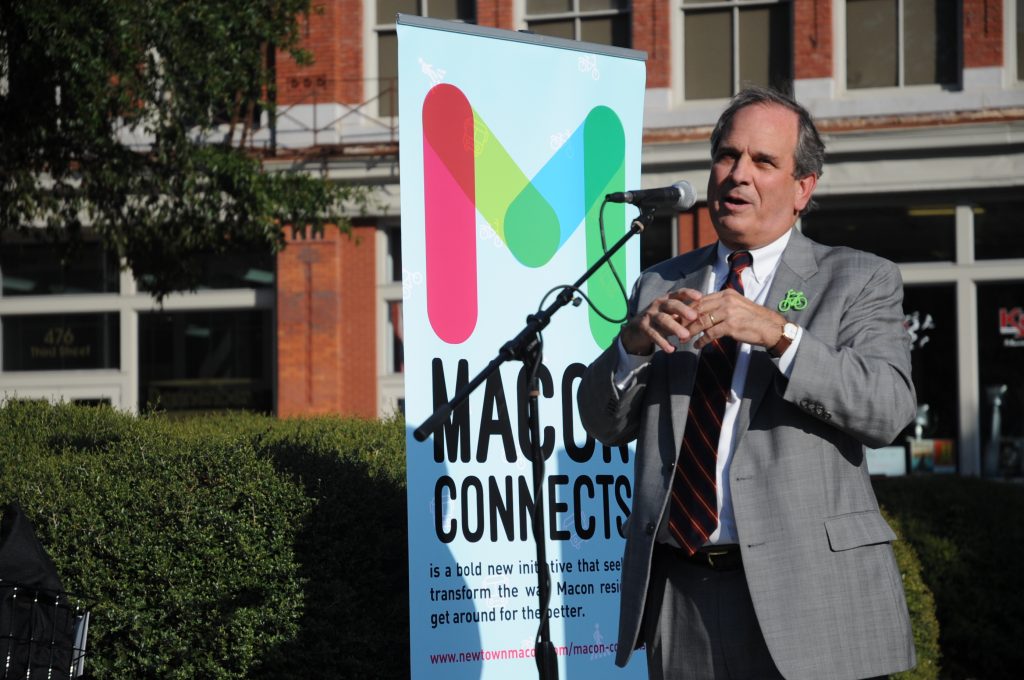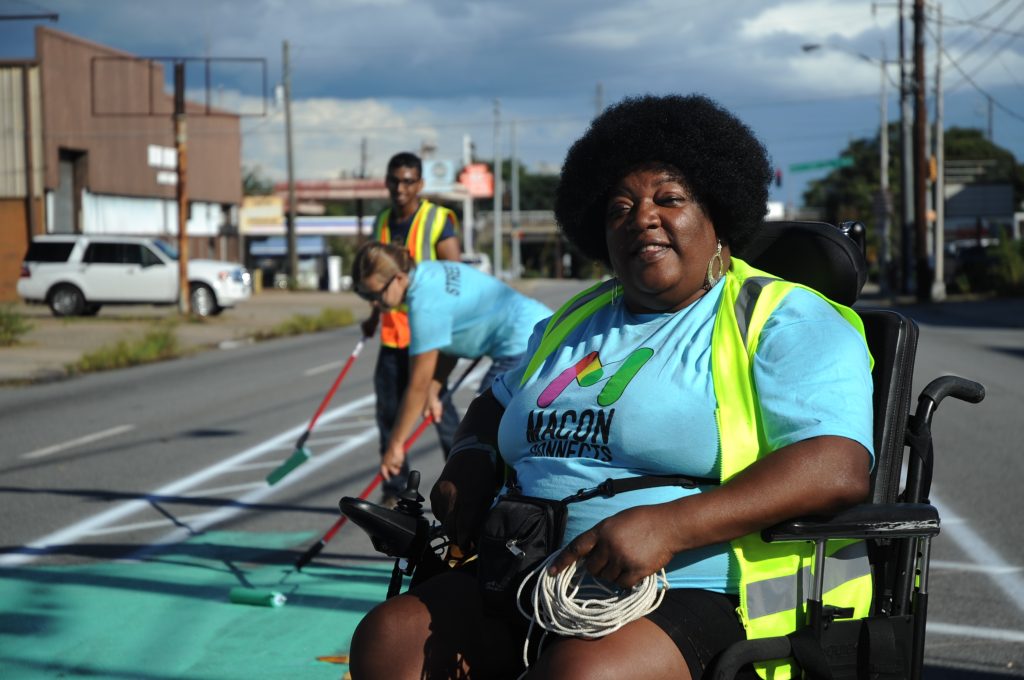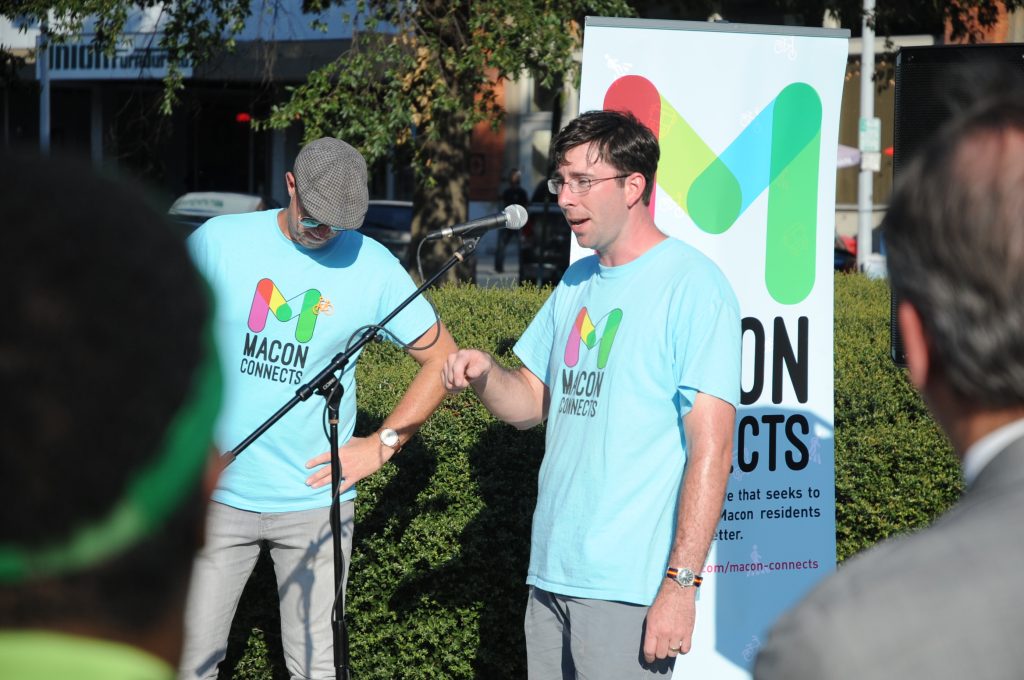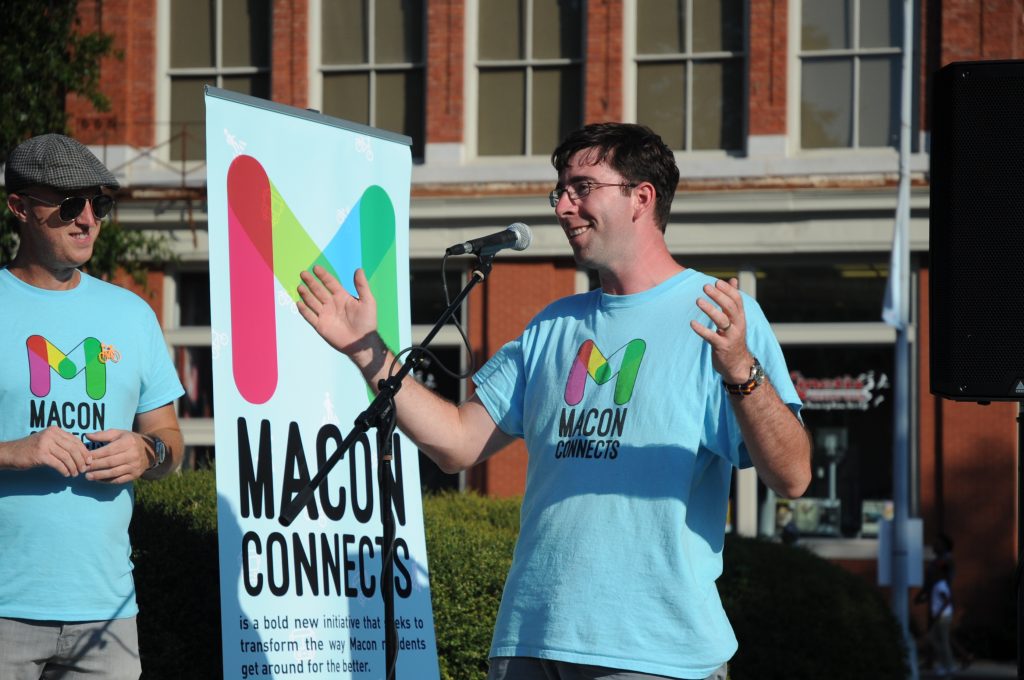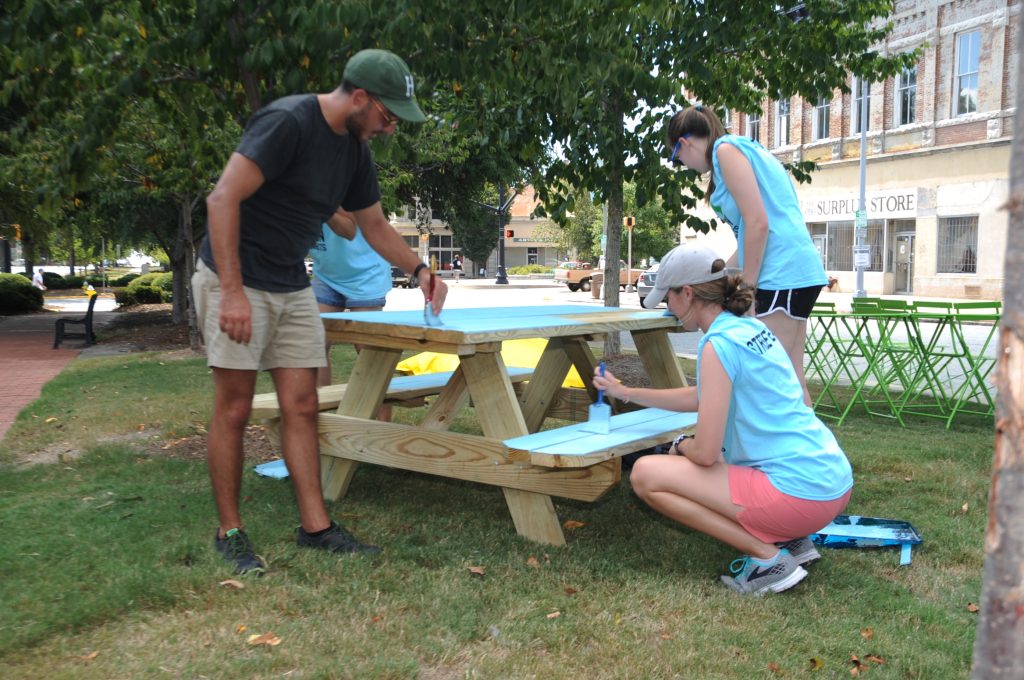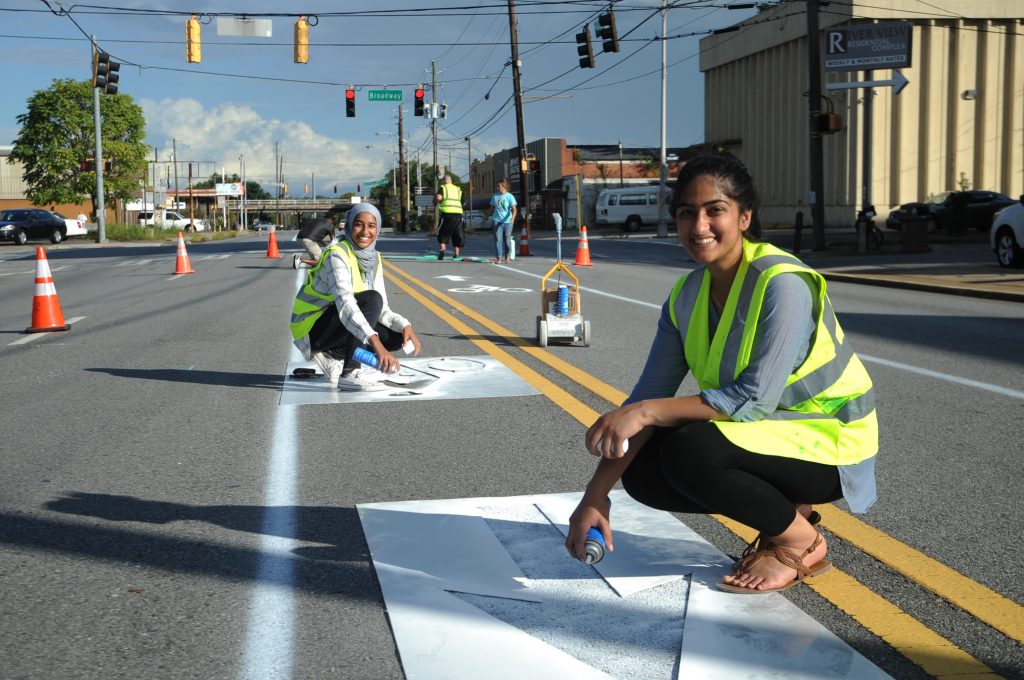Imagine a Macon where bikes lessen the burden of parking. Pedestrians are put first. Cyclists pedal with confidence in their own, designated lanes. Streets were complete for everyone. Bikes become a culture over cars. And Downtown Macon is the spoke of that revolution.
Macon saw what it could be – and hopefully where it is heading, when in September, the world’s largest temporary, or “pop-up,” bike grid was installed throughout the urban core.
Spearheaded by NewTown Macon, funded by a Knight Cities Challenge grant from the John S. and James L. Knight Foundation, and in conjunction with international organizations 8 80 Cities and Better Block, this large-scale, dream-big bike lane project titled “Macon Connects” tapped into our city’s inner cyclist, and 470 cans of strip paint and 80 volunteers hours later, the world’s largest bike grid was born.
At a little more than five miles long, the lanes were slated to remain functional for two days starting September 16, but Macon Mayor Robert Reichert allowed the lanes to remain up for additional weeks. “It was a great project that allowed us to test what types of bike lanes work best for Downtown Macon and will better prepare us for when we can build permanent biking infrastructure,” said NewTown’s Director of Place Erika Conleay.
And it’s not just about attracting cyclists to downtown. “The bike lanes weren’t just beneficial for bicyclists,” she said. “The lanes provided barriers and slowed traffic down. This creates a safer environment for all pedestrians.”
Studies have shown that making Macon a more bike-friendly and walk-able community will retain and attract the much-sought-after millennial generation – the largest generation in the country, according to the census bureau.
During the week the pop-up grid was up, NewTown Macon reported 1,518 bike riders on the network, an increase of 173 percent from the week the grid was being installed. Additionally, more than 70 percent of Maconites surveyed said they would support permanent bike lanes in downtown Macon.
“I think the most transformational aspect of this project will be that we got so many people to have a positive experience on quality infrastructure, and now we can demonstrate how it should be built going forward,” Rogers said.



